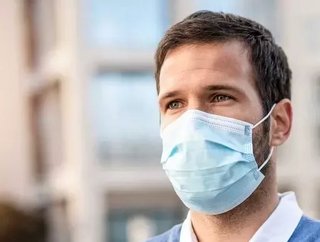Know your mask: flu respirator masks vs surgical face masks

In only a few months, the world as we know it has changed fundamentally. Many countries are still under some version of lockdown and widespread travel restrictions remain in place. As more members of the public suddenly seem to be claiming expert epidemiologist knowledge, often sharing misleading ‘facts’, people have a greater need than ever for clear, reliable information. The rise of fake news and misinformation can now seem painfully intertwined with the spread of the coronavirus.
Social distancing is of course essential, but it’s important to bear in mind that virus-filled droplets generated by coughing and sneezing can travel up to eight metres, as found by a ‘Journal of the American Medical Association’ article based on work from MIT Associate Professor Lydia Bourouiba. Sneezing produces a ‘muzzle velocity’ of 50 metres per second (m/s), with 10 m/s for coughing. This may render the two-metre distance somewhat unhelpful unless reinforced by an additional barrier: a mask.
The British government has made face coverings compulsory on public transport, such as buses, trams and trains. While it has not mandated protection standards, The World Health Organization, along with multiple independent researchers, recommends that in enclosed spaces, people over 60 ̶ and people of any age with underlying health conditions ̶ should wear a ‘medical grade’ mask. Researchers at the University of East Anglia found that ‘wearing a face-mask while out and about on public transport, in shops and crowded places could help protect vulnerable people from COVID-19’.
The basic science of how viruses spread and how masks work makes it clear that any kind of barrier is an improvement on none. However, not all masks are created equally.
Currently, there are two main types of face masks: surgical face masks (also known as simple face masks) and respirator masks (such as N95 respirator and other FFP2/3 forms). Unlike surgical masks, which are unable to filter out virus-containing droplets, respirator masks protect against small droplets and particles including aqueous and oily aerosols, smoke, and fine dust. For this reason, respirator masks are an important tool for use during the COVID-19 pandemic.
A study published by the UK’s Health and Safety Executive, ‘Evaluating the protection afforded by surgical masks against influenza bioaerosols’, found that respirators provided a much higher level of protection against viruses. The study focused on the effectiveness of surgical masks against a range of airborne particles and through separate tests measuring ‘levels of inert particles and live aerosolised influenza virus’.
The results showed that, when compared to the baseline level, surgical masks produced a 6-fold reduction in exposure, meaning that live virus cells could be detected in the air behind all models of mask tested. In comparison, a well-fitted respirator provided a 100-fold reduction as a minimum, providing meaningful protection from virus particles.
Another recent study conducted by engineers at the University of Edinburgh assessed different face coverings using the Background Oriented Schlieren imaging technique that enables scientists to measure the distance and direction travelled by air expelled when a person breathes or coughs.
Measurements were taken from people wearing different face coverings while standing or lying down, and from a manikin connected to a cough-simulating machine. Researchers found that all face coverings without an outlet valve reduce the forward distance travelled by a deep out-breath by at least 90 per cent. Additionally, only masks that form a tight seal with the face were found to prevent the escape of virus-laden fluid particles, the team says.
While masks do not guarantee 100% protection for the wearer, if used correctly, they can considerably reduce the likelihood of infection.
With public demand for masks growing daily, it seems sensible to ensure that those in higher-risk groups and higher-risk situations are able to access these high-specification masks. Masks, when added into the mix of social distancing and hand washing, can contribute to a meaningful ‘flattening of the curve’. While this term may at first seem only of interest to statisticians, it matters to us all as it is the concept used by virologists to indicate the reduction in rates of virus transmission. When an infected person coughs or sneezes, up to half a million virus particles can spread to those around them, so it’s never been more important to have the right protection against what is a very infectious virus.
Following this evidence, Clinova has seen a significant increase in enquiries from the public about its face mask, COVAFLU ™ Respirator Mask. The most common question relates to the suitability and effectiveness of different mask types during the COVID-19 pandemic.
The protective function of the respiratory masks is verified by the Europe-wide EN 149 standard. There are two classifications of respirator masks ̶ FFP2 and FFP3 ̶ which filter up to 94% and 99% of particles respectively. The more particles that need to be filtered, the greater the number of filter material layers. The different layers fulfil a variety of functions including aesthetics, comfort, stability, tear-resistance and of course, filtering.
Ultimately, while surgical masks can help prevent transmission of infectious agents by large droplets, they do not protect against airborne infectious agents in smaller droplets, such as viruses. As such, surgical masks will be less effective at protecting the wearer from potential infection by COVID-19.
By Dr Tom Bracewell, Chief Medical Officer for Clinova
- Gates Foundation & South Korea to embolden healthcare sectorTelehealth & COVID-19
- Polio in 2022: the virus is back in the post-COVID-19 eraTelehealth & COVID-19
- Digitalisation and supply chains: the NHS post-COVID-19Hospitals
- Australian healthcare workers COVID-19 appreciation paymentHospitals






